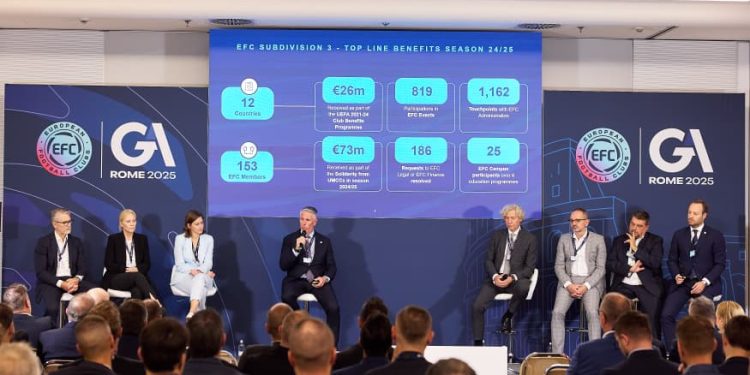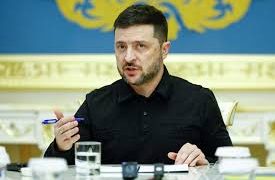European Football’s Power Shift: The Rise of the EFC
In a landmark event for European football, the newly rebranded European Football Clubs (EFC) held its first general assembly in Rome, marking a significant shift in the landscape of the sport. The gathering, attended by over 800 delegates, including club presidents and representatives from FIFA and UEFA, showcased the growing influence of the continent’s elite clubs.
After years of being overshadowed by other organizations, the EFC has emerged as a powerful lobby group, reflecting the ambitions of the biggest names in football. With a fresh logo and a vibrant atmosphere, the assembly kicked off with fireworks and a gala dinner at one of Rome’s historic sites, featuring a performance by Eurovision-winning band Maneskin and special guest Zlatan Ibrahimovic.
EFC president Nasser Al-Khelaifi emphasized the importance of “football” in the organization’s identity, aiming to centralize the voice of clubs in global football politics. The event not only marked a new name but also a new era for the organization, which had previously struggled for recognition.
A New Era for Club Power
The reshaping of the EFC comes on the heels of a tumultuous period where several top clubs attempted to form a breakaway European Super League in 2021. Although that initiative faced strong backlash and ultimately failed, it sparked a series of changes that have culminated in the current landscape. The clubs that sought more influence have now secured expanded UEFA competitions, a larger share of media revenues, and a significant say in marketing strategies.
The assembly in Rome was a celebration of these victories, with discussions revolving around the lucrative potential of the revamped FIFA Club World Cup. The tournament has drawn attention for its financial rewards, with clubs like Chelsea reaping substantial profits. The delegates were eager to explore ways to include more elite teams in future iterations, even suggesting a “play-in tournament” to incorporate additional clubs.
Financial Gains and Future Challenges
As the EFC flourishes, the conversation around media rights and revenue distribution takes center stage. The organization is negotiating new media deals that promise a significant increase in income, but concerns linger about the potential impact on smaller leagues. While the solidarity payments to non-UEFA participating clubs have increased, the disparity in earnings between elite clubs and those outside the top tier continues to grow.
Amidst this celebration, some delegates expressed concerns about the sustainability of the current model. The EFC represents a substantial portion of clubs, but an additional 140 remain outside its influence, highlighting an ongoing divide in European football. The prospect of reduced league sizes, as seen in Ligue 1, has raised eyebrows among those wary of consolidating power.
The Future of Football
The assembly also hinted at the looming specter of a revived European Super League, as discussions around the ESL’s financial backers and UEFA’s ongoing legal battles surfaced. While many attendees dismissed the likelihood of a new league forming, the undercurrents of discontent and desire for greater control were palpable.
As football in 2025 continues to evolve, the EFC’s role as a central player in shaping the future of the sport is undeniable. With Al-Khelaifi at the helm, the organization is poised to exert even more influence, potentially positioning itself as a key player in global football governance.
In this new era, the big clubs are not just players on the pitch; they are the architects of football’s future, driving the game towards a new horizon. As the delegates parted ways, one thing was clear: the landscape of European football has shifted, and the big clubs are firmly in charge.







